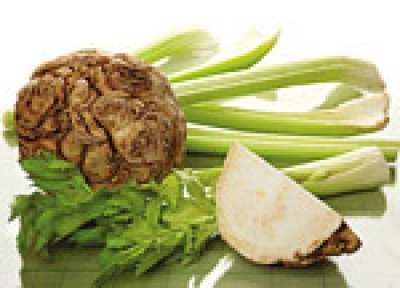Apium graveolens
First attested in English 1664. Apium graveolens is used around the world as a vegetable, either for the crisp petiole (leaf stalk) or the fleshy toproot.
The plants are raised from seed, sown either in a hot bed or in the open garden according to the season of the year, and after one or two thinnings and transplantings, they are, on attaining a height of 15–20 cm, planted out in deep trenches for convenience of blanching, which is effected by earthing up to exclude light from the stems.
In the past, celery was grown as a vegetable for winter and early spring; it was perceived as a cleansing tonic, welcomed to counter the salt-sickness of a winter diet. By the 19th century, the season for celery had been extended, to last from the beginning of September to late in April.
Celery is used in weight-loss diets, where it provides low-calorie dietary fibre bulk. Celery is often purported to be a "negative calorie food" based on the idea that the body will burn more calories during the digestion of the food than the body can extract from the food itself. The scientific accuracy of this statement is disputed by some.